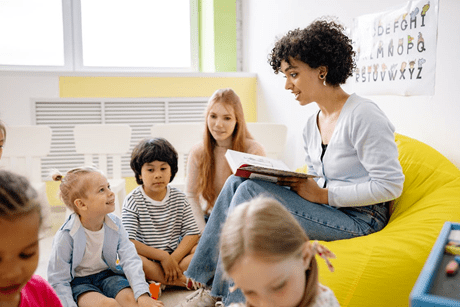One Parent’s Story Shows the Personal Power of Structured Literacy
While personal anecdotes should be considered carefully, what is most personal is often most universal. A story shared by New Zealand education reporter Catherine Woulfe supports this sentiment: last spring, Woulfe wrote about her son’s reading journey, which was profoundly shaped by Woulfe’s discovery of structured literacy. This week, we share Woulfe’s reflection on the importance of structured literacy and decodable texts for her son, and how her experience aligns with larger efforts to provide more decodable readers and evidence-based structured literacy to young readers.

Reflecting on her son’s literacy development, Woulfe wrote that because her son, Ben, excelled in math and took up talking “hard and fast,” she assumed he would become a competent reader by simply being near quality books, caring teachers, and engaged parents. Yet while Ben memorized a staggering amount of reading material and easily deciphered words through pictures, it quickly became apparent that he was reciting rather than reading. Writing was similarly challenging: when Woulfe wrote words for Ben to copy, Ben began to “mirror,” or write every letter the wrong way around. Although mirroring is common among young readers, Woulfe worried that it signaled dyslexia.
Reassurances from Ben’s teachers were backed by their faith in Te Whāriki’, New Zealand’s Early Childhood Education (ECE) curriculum that emphasizes child empowerment and bicultural learning. While these tenets are crucial for young learners, the key to Ben’s reading breakthrough was Woulfe’s discovery of structured literacy on Te Kete Ipurangi, the New Zealand government’s education resource site for teachers. Designed to provide evidence-based programs for students with dyslexia, the webpage cites the importance of systematic decoding strategies, decodable texts, and clear explanations of reading concepts for young readers struggling with dyslexia and/or other reading challenges.
For Ben, clarity was key – but so was Woulfe’s self-described “privilege toolkit” of tutoring, networks, and the parental knowledge to recognize and respond to a problem with their child’s literacy education. Woulfe acknowledges that many parents lack the time and resources to solicit the structured literacy books, tutoring specialists, and decodable texts that boosted Ben from rote memorizer to voracious reader.

Since Woulfe published her reflections, however, governmental entities in New Zealand and elsewhere have responded to the call for more decodable books. In January 2021, the NZ Ministry of Education announced that “Ready to Read” Phonics Plus decodable readers would be distributed to all elementary schools in early 2021. In the U.S., the roll-out of decodable texts is less widespread, but federal pandemic relief funding has reignited the push toward structured literacy in some school districts: in Fulton County, Georgia, the school board just approved over $2 million in federal pandemic relief dollars to purchase family literacy boxes, which will each contain 10 decodable readers and be distributed twice a month to 3,300 to pre-K through second grade readers across 11 schools. Similarly, the Essex Elementary School Foundation in Connecticut just provided an $8,600 grant for the 2021–2022 school year for the purchase of Geodes Decodable Texts for K-2 instruction, which will reinforce the phonics and decoding skills taught by the school’s reading program.
Clearly, sufficient funds are necessary to instill structured literacy and distribute decodables at a large scale. Even so, reflections by Woulfe and others leave us hopeful that lifelong literacy can start at the personal level, building from conscious teachers, parents, and school boards to incite change at higher levels.
Take-Aways:
- Personal reflections from parents and teachers can be helpful to understand the individual impact of structured literacy education, as seen in the story of Catherine Woulfe and her young son, Ben.
- Key to Ben’s reading progress was Woulfe’s discovery of structured literacy and its emphasis on phonics, decodable texts, and clearly explained reading concepts, all of which helped Ben become a confident and enthusiastic reader.
- Sufficient regional and/or federal funds are needed to provide decodable readers to students, as demonstrated by recent distributions of decodable books in New Zealand, Fulton County in Georgia, and Essex Elementary in Connecticut.
Start Teaching Reading for Free Now!
Access Level 1’s four interactive stories and the accompanying supplemental resources to teach elementary students how to read. No credit card is needed. Join the 42,635 teachers and students using our reading program.
